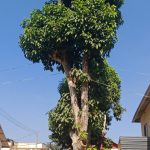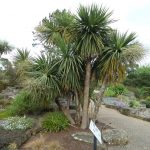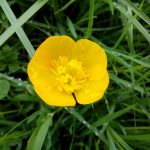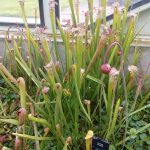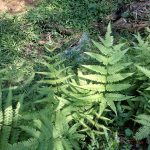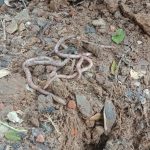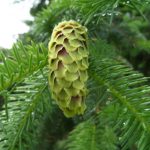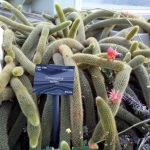Important Fossil Genera : a short description
- Study of Paleobotany gained momentum with the discovery of certain fossils that were well preserved and had resemblance to living forms and it was easy to describe and place them in a correct systematic position.
- Such fossils were also helpful in explaining a few missing links in tracing the phylogeny of plant groups
- Understanding some such fossils will help us appreciate the importance of Paleobotany and its role in study of plant evolution .
LEPIDODENDRON
Systematic Position
Sub-Division: Lycopsida
Order : Lepidodendrales
Family : Lepidodendraceae
- This is a fossil appearing similar to Class Lycopsida of Pteridophytes which was a heterosporous form
- It belongs to an age that ranged from Upper Devonian to Upper Carboniferous period of the Paleozoic era
- This genus was particularly dominant in the swamp forests of the Carboniferous period
- It comes under the Order Lepidodendrales which includes a number of other Form genera
- This order is important because the fossils coming under this group are very well preserved
- Most of the forms are preserved as impressions and casts
- The first fossil found under Lepidodendrales was the stem portion named as form genus Lepidodendron
- Later on all the other parts such as :
- Leaves called Form genus Lepidophyllum,
- Underground axes called Form genus Stigmaria,
- Strobili under the name form genus Lepidostrobus and
- Megasporangium with seed named as form genus Lepidocarpon were found
- Thus the whole plant was reconstructed as the natural genus Lepidodendron
- As per the rules of nomenclature in Palaeobotany, the reconstructed plant was called Lepidodendron as it had to be named after the first found fossil form
- The reconstructed plant natural genus Lepidodendron was a large tree more than 30 m in height with an unbranched main trunk and a crown of leaves at the top that showed repeated dichotomous branching
- The tips of leaves bore the strobili called form genus Lepidostrobus and leaves were called form genus Lepidophyllum
- The leaves were arranged spirally and appeared linear or acicular, simple and showed the presence of ligules
Form-genus Lepidodendron
- The main trunk was the stem which was the earliest recorded fossil in this group
- The surface of the trunk showed the presence of leaf scars with leaf cushions that followed a set pattern which was helpful in identifying the species
- The middle of the leaf cushion had the leaf scar and the region of the bundle or the position of the stalk was also visible
- The bundle scar was flanked by the parichnos strands which formed part of the parichnos system
- Parichnos system is a special system of a network of parenchyma tissue with air spaces which is a special feature of Arborescent (Tree-forms) Lycopods
- Sometimes two additional scars have been observed which are formed due to shrunkem parenchyma tissue
- The underground support system for this group of Lepidodendrids was the Stigmarian system which was seen as a bifurcation of the trunk once and another time to form four branches called the Stigmarian bases
- These were further branched and these appendages were called Stigmarian rootlets
- A transverse section of the fossilized stem revealed several layers of tissue
- The outermost layer of the stem showed a well developed Periderm that was essentially produced from the underlying layer of Phellogen
- Phellogen had formed the Cortex on the inner side that had three regions
- Outer – middle and inner cortex
- The leaf traces pass through the middle cortex and on entering the leaf base split into two parichnos strands
- Following the inner cortex a layer of phloem was seen and inner to this a region of secondary Xylem was seen which showed poor development in the upper part of the trunk
- Secondary Xylem is composed of tracheids with scalariform thickenings
- The central part of the stem shows a prominent pith and medullary rays
- The stele is protostelic and pith was absent in the smaller branches of the stem
Form – genus Lepidocarpon
These are the seeds belonging to the natural genus Lepidodendron and have been collected in the form of compressions.
The megasporangium shows a covering of the sporophyll on both sides leaving a small opening in the centre between the halves of the integument.
This opening could be considered as equivalent to a crude micropylar opening.
The prominent feature of Lepidocarpon is a functional megaspore that developed and matured into gametophyte even before being shed from the strobilus.
It showed the three aborted spores out of the four in the spore tetrad, megaspore and megagametophyte which is similar to that of a Gymnospermous ovule.
The megasporophyll covering the megasporangium and the sporangium inside it can be considered homologous to integument and megasporangium respectively. t
The megaspore wall showed sporopolleninin in the form of strands
But Embryos were not observed in Lepidocarpon seeds
Lepidocarpon is called as a seed by many Paleobotanists while some feel it is a seed-like structure as it does not possess a true integument
It is an example for Convergent evolution as it could be fore-runner of the modern –day ovules possessing a single megaspore that is functional
Role in Phylogeny of Pteridophytes and Gymnosperms
It is a giant Lycopod or arborescent form that is the ancestor of the extant Lycopsids and stands a testimony for a high level evolution occurring due to sudden mutations on a large scale
Order Lepidodendrales with its seed form genus Lepidocarpon is a pioneer for heterospory and seed habit that arose at a later stage in the evolution of plants


